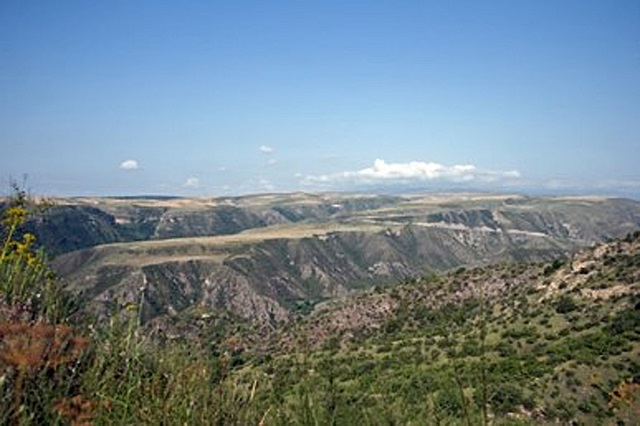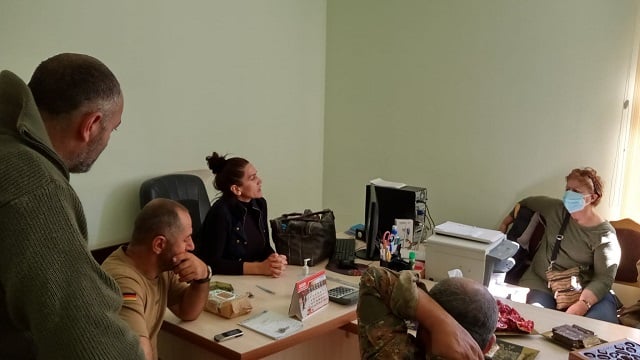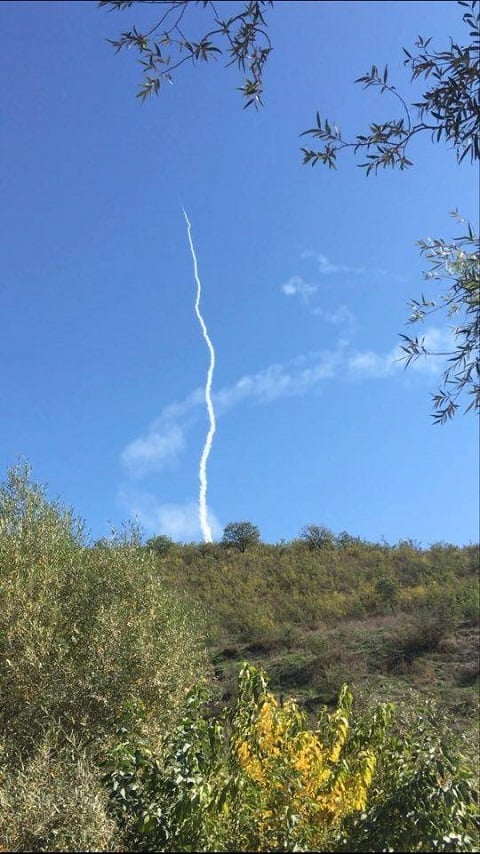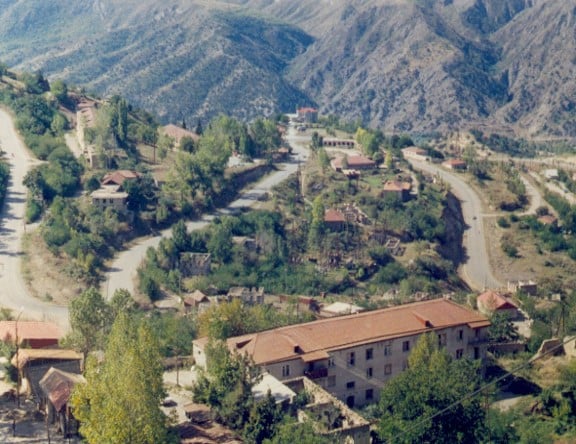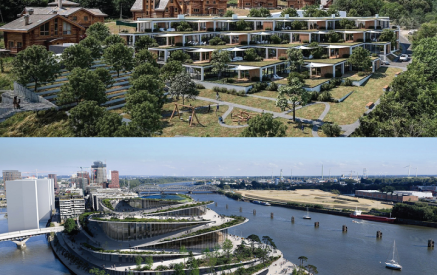The Armenian Weekly. BERDZOR, Kashatagh Province, October 20—Dusk. Usually, this is a lovely time to drive through the Lachin Corridor—that vital patch of land linking Artsakh to Armenia. From the reddish hues of Syunik’s plateaus to the west, to the serpentine paths toward Shushi to the east; from the thinly lit houses dotting the hills around us, to the nearby rushing waters of the Aghavno River, this place has always been special…especially at dusk. This is due to the landscape, yes, but also to the experience it reveals. Over the past 17 years, dusk for me has marked the end of a hardworking day navigating Kashatagh’s rough terrain in the ongoing drive to resettle and develop this strategic borderland, one that ensures Artsakh’s precious security.
But on this occasion, dusk also carries an ominous uncertainty. For while I’ve experienced war before, war has never been like this. Now, war means not only snipers and ground troops, but long-range missiles that have already damaged the corridor’s main bridge, forcing us to drive slowly and carefully through off-roads leading to safety. It is a quiet ride, as we are cognizant of the ever-present threat of combat drones that could blow us to bits without warning, as they already did to some of our colleagues and compatriots. It is an eerie feeling, marked by a weird combination of urgency and trepidation. Like so many others here, I now feel I am in uncharted territory.
Fortunately, I am not alone. I am here accompanying my wife Maro, her colleague Nova, and Gor, a Defense Ministry liaison. We have been distributing food packages to our fighters, service personnel and civilians throughout the border regions. Among the four of us, I am possibly the least brave. Indeed, Maro had jumped at the opportunity to assist the region’s villagers, many of whom she knows personally and longs to help. Frankly, she is more worried about me catching coronavirus than any Azeri attack! Meanwhile Nova, already outraged by the atrocities committed on our civilians, seems ready to pounce on the first enemy he lays eyes on. But the real treat is Gor, who has regaled us with fresh stories of the heroic defense of Hadrut, Artsakh’s southern fortress, in which Armenians performed a stunning turnaround, driving Azeri attackers back down toward the Arax River.
Here is a feeling of courage-overcoming-despair, and it is all around us, reinforced by the striking personalities we’ve met during our day’s trek. Most striking was that of Dr. Lusine, head doctor at Ishkhanadzor’s clinic—since converted into a field hospital for our soldiers and the wounded. With her usual energy and forthrightness (plus a revolver on her person), she seemed tough and prepared for anything. And yet simultaneously, she expressed such warmth, courtesy and gratitude when we arrived with the needed assistance. Her demeanor reinforced the notion that Artsakhtsis, in times of peace, are the friendliest, most relaxed people. But in times of war they are ferocious and unsparing.
Read also
Dr. Lusine’s attitude seemed to reflect a larger tendency among people here. Even as rockets could be heard overhead, we almost never felt panic from those we met. Indeed, on the day we came, some villages were ordered to evacuate, and they did so, mostly in orderly fashion, guided calmly by the authorities, understanding that the move is meant to be temporary while we give wide berth to our fighters who are securing these areas.
Lest we forget, I should mention that Kashatagh’s people are a diverse lot, including settlers from myriad places – some from Armenia’s earthquake zone, others from Baku, some from elsewhere in Artsakh, and most recently, Armenians fleeing Syria. Knowing this diversity, I found it peculiarly appealing to see a “one for all, all for one” attitude on display. Also impressive is the degree of confidence people have shown in their authorities. It is further evidence that this is truly a people’s war, quite unlike the situation across the border. There, the elites of Baku and Ankara seem to need this war for their own cynical purposes, while showing contempt not only for us, but for their own people. Indeed, official Baku has kept most of its population in the dark, in an information blockade, while using young conscripts as cannon fodder, deploying them like waves of ants marching to near-certain death, and then refusing to pick up the dead bodies and bury them. The difference between the sides is stark indeed, marked by many “intangibles”—the subjective factors like fighting spirit, will to survive and knowledge of terrain—that have helped Armenians narrow the odds of a war that seems unwinnable on paper.
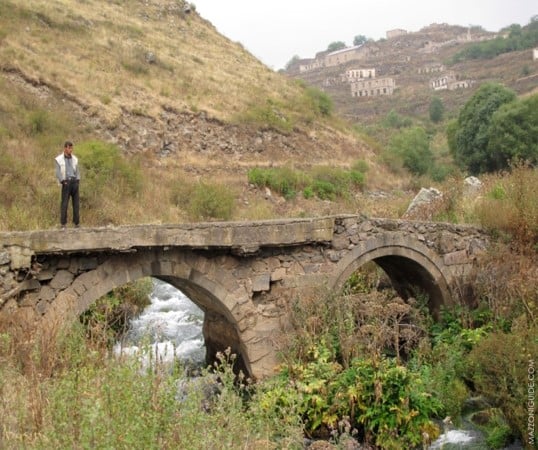
One of Kashatagh’s many stone bridges. This one, north of Berdzor, is still intact. Others have been damaged by missile strikes.
As our car gradually inches toward Goris on the other side of the corridor, we look back to see the southern skies light up in a fireworks display, as our air defenses shoot upward in search of the enemy drones that invade our airspace. And as we reach safety at last, we remark on our good fortune, thank our fighters for keeping us safe and vow to return again whenever the need arises.
Antranig Kasbarian
Main caption: The mountain plateaus of Syunik, viewed from Berdzor (Lachin)




















































